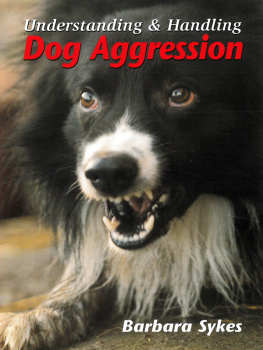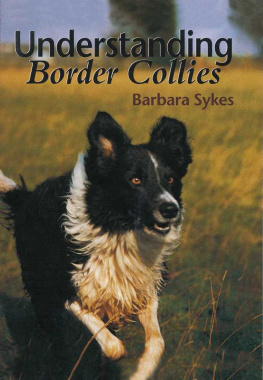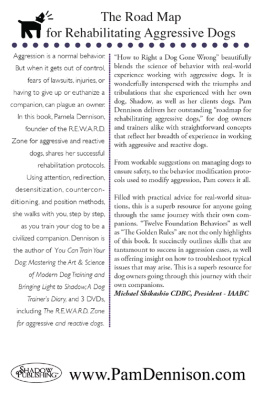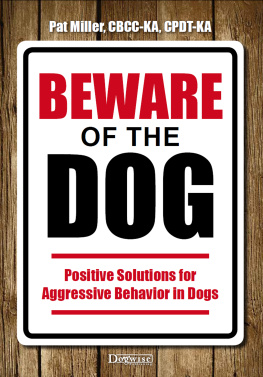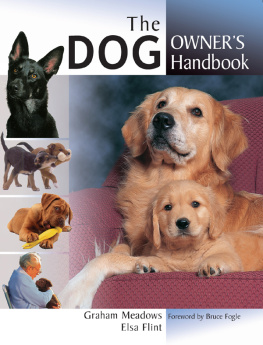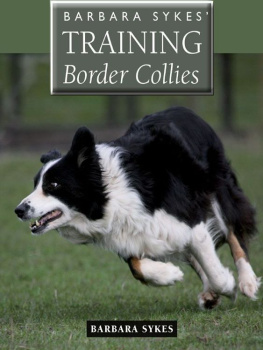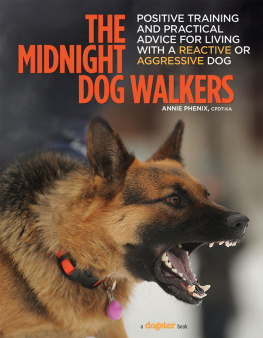This book deals with aggression and how to establish a foundation of good manners in a dog. Good manners should not be confused with training. It is difficult to train an aggressive dog and can be demoralizing when you feel that you are not succeeding; but educating a dog to have good manners is essential, comes before training and establishes who is pack leader. It is not always easy to digest what an instructor is saying to you when your dog is misbehaving and so the following pages are to help you to have a better understanding of aggression in your own time and at your own pace.
No two dogs are alike, so it is essential that you study your dog as an individual thus enabling you to understand his learning capacity and to recognize his problem. Never try to run before you can walk and never confront a dog because you invariably will end up as the loser. I do not usually describe case histories but I feel that in the case of aggression it is helpful as it helps to show the great difference in dogs attitudes, regardless of size or breed.
The only references to breeds in this book are to depict examples of size and character and there is no intention to show that any one breed is more or less aggressive than another. The cover dog is not to be seen as depicting his breed as an aggressive one. He was a rescue brought to me for rehabilitation and so it was far easier to record the progress of a resident dog throughout to help you to understand how he came to be aggressive and how I handled him and his problems. Craigs photograph on the cover shows him as he was, but you will see a far nicer Craig at the end of the book.
There are no tricks or treats in the book; it is about aggression and I make no apologies for writing it as it is. I do not believe in wrapping a nasty tasting sweet up in attractive paper to make it more palatable. Aggression is a serious problem, usually instigated by humans, albeit unwittingly. It is important to reclaim the leadership of the pack and to demote the dog to a pack member: if this means admitting that we have made some mistakes along the way, then so be it, we are only human. The first priority is to sort the problem out and not to lay blame, feel defeated or think that you do not have the magical power others seem to have with difficult dogs. There is nothing special about understanding a dogs mind, we are all capable of doing it, but we have to be willing to see the dog as a dog, realize it has its own form of communication and its own canine instinct. We need to learn how to handle those instincts, not to fight them.
CHAPTER 1
WHAT IS AGGRESSION?
The word aggression produces different responses from different people. It does not necessarily need to have been applied to a dog, since aggression is in evidence in every living being and manifests itself in different ways. When used in connection with a dog it often produces nervousness or even fear. We can accept aggression in human beings but often fail to see anything but harmful behaviour from a dog classed as aggressive. Yet many dogs are often trying only to protect themselves because they have, albeit unwittingly, been put in a position of leadership by their owners and are not mature or experienced enough to handle it correctly.
If human beings are aggressive we do not immediately picture them as attacking everyone they see; at some stage of their lives we may hope that they will have been taught how to handle any aggressive tendencies they may have and how to deal with anger. If they have not received such education, usually from one or both parents when they are young, then it is possible that their aggression will manifest itself violently and often against another human being. However, correct guidance will help a child or a young person to control his or her aggression and in many cases this will provide the encouragement to redirect this energy into becoming a useful tool, not only for themselves but also to help others.
How can aggression be useful and how can it help ones fellow beings? If we think of aggression by using another word we can begin to lose some of the preconceived notions of how it will manifest itself; so let us for the moment forget aggression and replace it with indomitable spirit. Now it is easier to understand how this can be both useful and helpful. It is indomitable spirit that keeps the body going against all odds. When fellow humans are suffering through no fault of their own, as in an avalanche, rock fall, shipwreck, or fire, it is the stubborn, never-give-up spirit of those people in the rescue bid, using their aggression to combat the elements to bring hope to the stranded.
So are indomitable spirit and aggression the same? No, but each one is a product of correct or incorrect channelling of certain characteristics as they show themselves in the human being or the young animal. If a child discovers that, by bullying other children, he not only gets his own way but also experiences what could be termed the feel-good factor he will continue to keep up this behaviour and, if not re-educated, may become aggressive. However, with sensible adult guidance the childs behaviour may be redirected into more acceptable forms, for example, competitive sport, then the aggression can begin to work favourably, and, of course, this would be looked on as admirable and not as something harmful.

Appearances may be deceptive; large dogs are often thought to be dominant or aggressive but they are just dogs, many of them are big softies. However, someone approaching a dog and thinking that it may be aggressive will transmit his or her nervousness to the dog and this may cause it to react in a defensive manner. The relaxed body language of this dog poses no threat, but he is still entitled to his own space.
Appearances may be deceptive and can cause us to judge without any valid reason. A tall, well-built person is often expected to be strong and capable, but a smaller, more delicate-looking one may appear as needing protection. But time spent with these people may prove that the taller person is quite sensitive and the smaller one well capable of looking after him or herself. We are often guilty of judging without any reason other than appearance, and to make a judgement on first sight may cause unnecessary hurt to the individual. This is not to be confused with a persons gut instinct: there are times when two people meet and they instinctively like or dislike each other. This is a natural, animal instinct and one that human beings do not always have enough respect for, either in themselves or their dogs. Dogs, like us, have a natural protective space around themselves and they often instantly like or dislike an intruder in that space, it may be another dog or it may be a human. This opinion will not have been made on just an outside appearance, there will be other factors causing the gut instinct to manifest itself. It could be smell, body language, attitude or any other of a number of possibilities; but the dog will not make a judgement, it will simply protect its space. Humans, however, do judge and if they are basing this on appearance rather than knowledge or instinct they may often judge in error, and, to make matters more confusing, they will often bear a grudge too.

